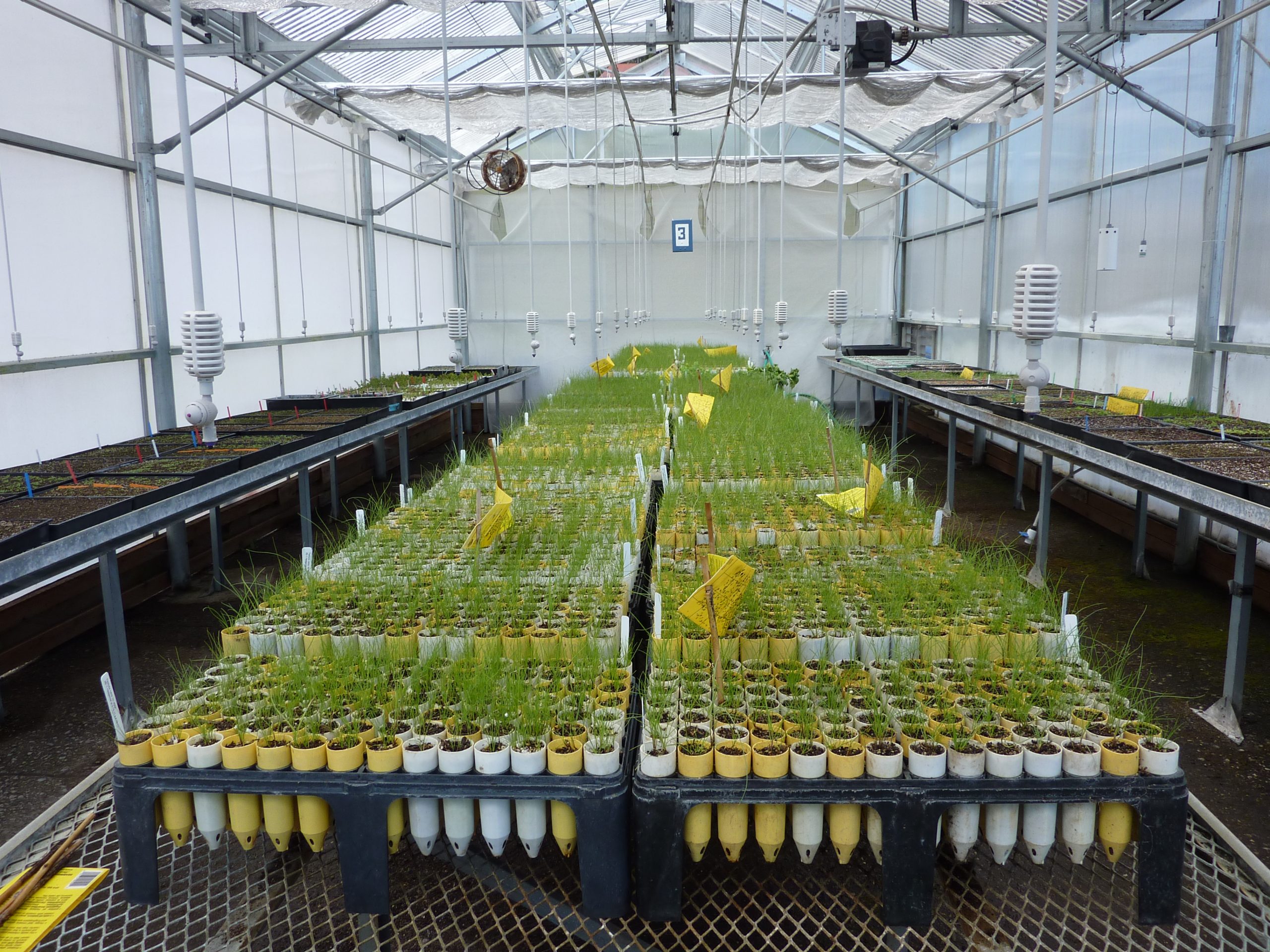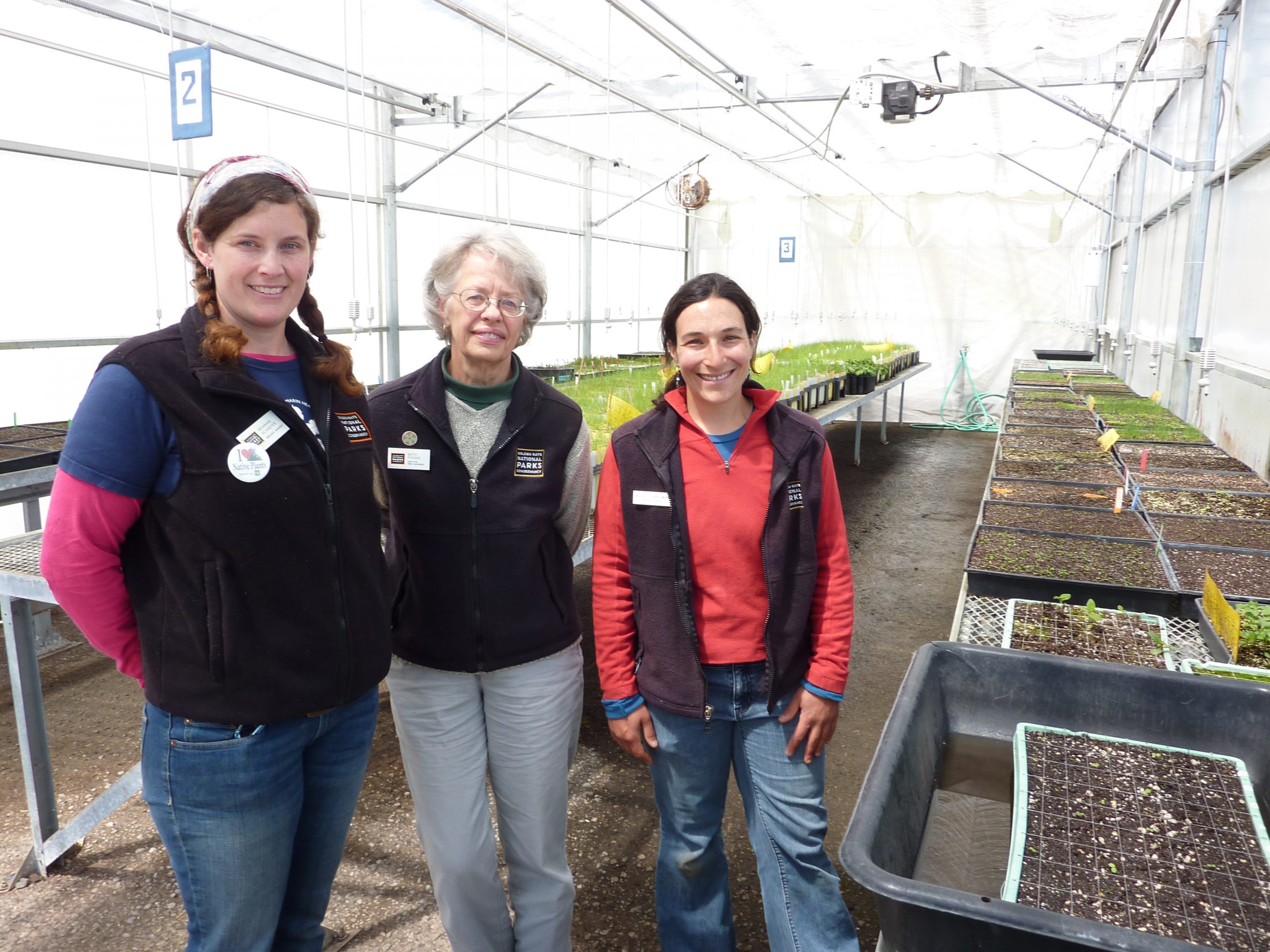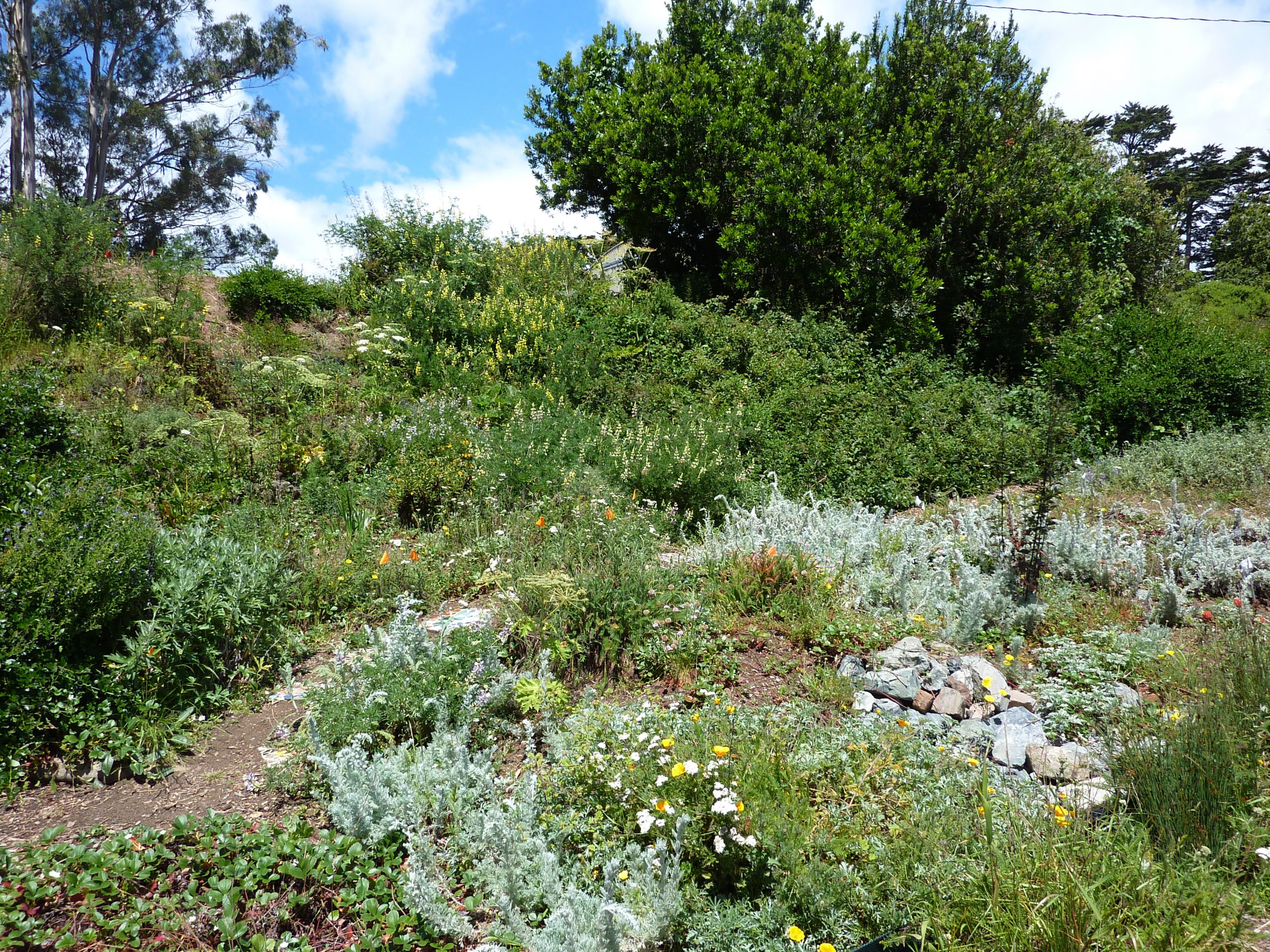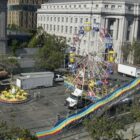Extreme biodiversity, coupled with the surrounding extreme urbanism, makes the Presidio arguably the epicenter of native plant restoration in the West.
The 2.3 square mile park, formerly an Army base, is home to 600 plants, more variety than in most states. It owes this biodiversity to its San Francisco location, a city at a biogeographic crossroads, even straddling two tectonic plates. The city also has diverse topography; microclimates; unique geologic formations; and a range of habitats: salt and freshwater marshes, seeps and creeks, rocky intertidal zones, chert outcroppings, dunes, serpentine grasslands.
At the Presidio, Betty Young leads a team of botanists that collect and grow native plants as part of a painstakingly precise attempt to restore the park’s native habitat.
Peter Brastow, who worked for the National Park Service at the Presidio with Young, is now part owner of a native plant landscaping business, Habitat City. “If you’re in another western state, how often do you even hear the term ‘native plants?’” he asked. “You’re surrounded by them. But in San Francisco, most of the land has been developed.”
Traditionally, national parks were set aside to conserve native ecology. However, as a latter day park, the Presidio was heavily altered and even contained Superfund sites. In their restoration efforts, botanists therefore work from historic photos and plant lists and specimens from early botanical explorations.
Restoring the park’s natural heritage is a monumental undertaking. In 2010, the Presidio nursery collected about 1.9 million seeds from 176 different native species within the park. Each species has different requirements, meticulously documented throughout an 18-month process.
Michelle Laskowski, seed collection specialist, said they harvest seed for a species from 50 individual plants in each watershed and collect only 5 percent of the available seed so the wild plant can still procreate.
“We also collect early-, mid-, and late-ripening seed so we’re not skewing the plants genetically,” said Laskowski.
That diversity is particularly important in the face of impending climate change.
“We don’t have any idea how plants will need to adapt to future conditions,” said Laskowski. “So having those different genetics allows us to hedge our bets.”
She stores seeds to match species’ habitats, providing ambient humidity, dehydration, cold, or light warming in an oven as needed.
Then production manager Brianna Schaefer simulates natural conditions by subjecting seeds to fire, low heat, boiling water, smoke disks, and scarification. Next, she simulates winter, putting seeds in the refrigerator and soaking them. Once roots emerge, she sows and nurtures plant in greenhouses until they’re ready for the wild.
In 2003, the National Park Service directed parks doing botanical restoration to collect seed locally, which generally meant from within the park. The guidance was in step with a growing recognition that using local genetic stock — adapted to an area’s pests, hydrology, climatic and soil conditions — would boost a projects’ long-term success.
Joyce Lapp, an ecologist for Glacier National Park, built a native plant nursery to restore land disturbed by an upgrade to the Going-to-the-Sun highway.
“We salvage sensitive or significant plant materials pre-disturbance,” Lapp said. “We try to harvest native soils as well because they are a significant component in successful restoration.”
Still, “within the park” could be a huge area, Young pointed out, which is why she follows what’s likely the most conservative approach to restoration in the park system.
“The Presidio has multiple watersheds, which can create barriers to movement of seed and pollen,” Young said. A species in one watershed could have evolved to be a different subspecies in another, each with genetic variations that help them thrive in their particular conditions. To preserve that variability, Young said, “We’ve set strict guidelines, collecting (seed) within a watershed, hilltop to hilltop.”
Young doesn’t know whether this level of detail is necessary. “(But) we want to be super conservative until we know that we don’t need to be.” Studies increasingly show that species exhibit significant genetic variability from place to place because they evolve in response to the nuances of their local environment. Since the California buckeye is extirpated from the Presidio, Young’s team harvests seeds from its closest neighbors on Yerba Buena Island in the bay. “If you bring in buckeyes from the Central Valley, they’re used to hotter, drier summers and 20- to 30-foot soils,” Young says. “Here, soil may be two to three inches deep.”
Other plants are now rare globally. Last year a manzanita, long considered extinct in the wild, made national headlines when it was discovered in the path of a new road. The plant was relocated to a secret location and is doing well.
For a plant like that, with three to five individuals left in the world (the others were in botanical gardens), “captive breeding is an apropos analogy,” said Young. “We’re bringing them together and hoping they interbreed.” But with most other rare plants, Young’s team strives for the opposite of artificial selection, retaining as many gene characteristics as possible.
Still, even when a plant has enough individuals remaining to ensure genetic diversity, other hurdles can make them rare.
“We may not be getting viable seed because they’ve been so isolated for so long that they’ve resorted to spreading vegetatively,” said Schaefer. “For others, establishing new populations in the wild has been difficult, often because of loss of appropriate habitat.”
Other government agencies also require the restoration of native plant habitat for some construction projects, including the Santa Clara Valley Water District, the Army Corps of Engineers, and CalTrans.
But such projects have limits. “With most commercial revegetation projects, they’re simply putting back the bare bones of the woody plants,” said Young, who used to do such work. “You never get the whole plant community, so you never know if you’re going to have a functioning ecosystem.”
That approach runs counter to the philosophy held by Young and Habitat City’s Brastow. “The number of ecological connections in a natural environment is beyond comprehension,” he said. “Our philosophy is to put back as many of the pieces that we can. Species thrive in a community.”
The Presidio has deeper pockets than other national parks because it rents out apartments and office space to fulfill its mandate to be financially self-sufficient. Thanks to that unique funding model and phalanx of volunteers, the Presidio gives Young license to attempt a full-scale restoration, making it a living experiment of whether humans can reengineer ecosystems.
“Only time will tell,” said Young.










